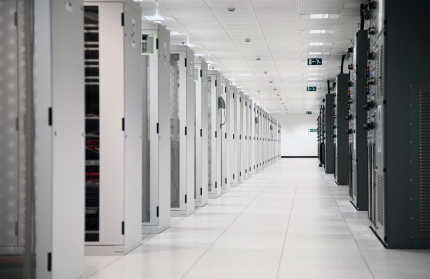Planning and Managing Distance Education Systems: Hardware Systems
Dr. Farhad (Fred) Saba
Founder and Editor, Distance-Educator.com
In a previous article in this series, I presented a model of distance education consisting of seven interrelated nested system levels. These system levels have been present in most distance education organizations that I observed, or planned and built over the past 30 years. In this article I will focus on the basic characteristics and key personnel of Hardware Systems, which as at the core of the model. Also, I will discuss its impact on the other system levels. In future articles in this series, I will discuss the other six system levels as well.
In the past 30 years, particularly since the analog to digital revolution in media communications took roots in the 1980s, information technology has had a transformational impact on academic research, teaching, learning and administering in universities. The strategic question at this Systems Level is: For what purpose hardware technology is going to be employed?
Basic characteristics – Hardware systems, such as, computers, videoconferencing facilities, and the telecommunication infrastructure that connect these systems together constitute the core of the Hardware System. These Systems are necessary for creating and disseminating instructional materials and providing communication between instructor and learner as well as among learners in virtual learning communities, such as enrollees in a course or a degree program. They are also essential for administration of the university, as it would be near to impossible to keep track of the affairs of thousands of students who populate the typical college or university today without the use of the computer. Scholars also rely heavily on computers to conduct research as it has become the laboratory of choice in the postmodern digital era.
 Key personnel- Colleges and universities rely on the expertise of chief information officers (CIO) to manage such a vast information technology infrastructure, the core of which consists of hardware systems ranging from mainframe computers to tiny lapel microphones and all kinds of information and communication processing hardware in between. An army of specialists with a variety of skills ranging from operations management and engineering to repair and maintenance keep the hardware systems for colleges and universities in working order.
Key personnel- Colleges and universities rely on the expertise of chief information officers (CIO) to manage such a vast information technology infrastructure, the core of which consists of hardware systems ranging from mainframe computers to tiny lapel microphones and all kinds of information and communication processing hardware in between. An army of specialists with a variety of skills ranging from operations management and engineering to repair and maintenance keep the hardware systems for colleges and universities in working order.
“The classroom is the handmaiden of a factory model of higher education, and the colleges that are truly strategically focused are already abandoning that model.” DeMillo (2012)
Impact on Other System Levels– In the past 30 years, particularly since the analog to digital revolution in media communications took roots in the 1980s, information technology has had a transformational impact on academic research, teaching, learning and administering in universities. The strategic question at this Systems Level is: For what purpose this hardware technology is going to be employed? DeMillo (2012) warned administrators who made heavy investment in information technologies in order to distinguish their institutions from others. He asserted that deployment of information technology in support of the classroom instruction is doomed to fail, if strategic changes do not take place to make investment in hardware systems yield desired results. He said:
“The classroom is the handmaiden of a factory model of higher education, and the colleges that are truly strategically focused are already abandoning that model. Their technology investments will be aimed at reinventing education. Traditional universities are incumbents in an era of rapid change and new competitors, and the future is seldom bright for incumbents. Simply adopting the trappings of new technology has seldom been enough to save incumbents from marginalization and eventual extinction. Borders and Montgomery Ward were both technological innovators. But they were also incumbents. Their technology investments continued unabated until they shuttered their stores.” (pp 7).
The decisive criteria for adopting new information technologies as well as supporting existing systems, however, should be the extent to which they improve the learning experience for students.
Although the author does not share the pessimistic view of DeMillo in the case of all incumbents, his cautionary note must be heeded by all those who are involved in making strategic decisions for institutions of higher education. Hardware systems along with software and telecommunication facilities have changed the operating model of the colleges and universities from competing for students in a domestic regional area to the global arena. They have driven down the cost of reproduction and dissemination of educational materials considerably, thus putting emphasis on the quality of the content and learning experience that students receive. The decisive criteria for adopting new information technologies as well as supporting existing systems, however, should be the extent to which they improve the learning experience for students.
Hardware systems are bound to evolve in the future as they become more affordable, and ubiquitous and will continue to have transformational impacts on how institutions of higher education make investments for their acquisition. For example, before the turn of the century universities maintained computer labs for their students in many departments including their campus libraries. As communication devices have become portable and wireless telecommunication has spread throughout the world, faculty, students and administrators are increasingly bringing their own hardware to campuses for academic and professional use. Paradigm shifts in hardware systems, such as, the rapid rise in the use of mobile devices which has led to the bring-your-own-device (BYOD) movement are bound to make significant changes in future strategic plans of higher education institutions. As personal communication devices become more popular the cost of maintaining computer labs decreases, while the necessity to reach students beyond the campus increases.
REFERENCE
DeMillo, R. A. (2012, April 29). So you’ve got technology. So What? Retrieved from the Chronicle of Higher Education. http://chronicle.com/article/So-Youve-Got-Technology-So/131663/








